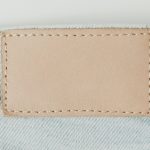Are you ready to add a touch of elegance to your garments?
In this article, we’ll show you how to sew a beautiful ruffle using chiffon fabric.
You’ll learn the steps to choose the perfect chiffon, prepare your fabric and tools, create a ruffle pattern, cut and hem the chiffon, and sew the ruffle onto your garment.
By the end, you’ll have a stunning ruffle that will elevate your sewing projects to a whole new level.
Let’s get started!
Table of Contents
Choosing the Right Chiffon Fabric
When choosing chiffon fabric, make sure it’s lightweight and has a fluid drape. This will ensure that your ruffle will have the desired effect and flow beautifully. Additionally, consider the color of the fabric. Chiffon comes in a wide range of colors, so choose one that complements your project or outfit. Whether you want a vibrant and bold look or a soft and delicate one, there is a chiffon color for every style.
Taking care of chiffon fabric is essential to maintain its quality and appearance. It is recommended to hand wash chiffon using a gentle detergent and cold water. Avoid using bleach or harsh chemicals as they can damage the fabric. Once washed, gently squeeze out the excess water and lay the fabric flat to dry. Avoid wringing or twisting the fabric as it can cause it to lose its shape. If you need to iron the fabric, use a low heat setting and a pressing cloth to protect it from direct heat.
Following these care instructions will help your chiffon fabric stay beautiful and last longer.
Preparing the Fabric and Tools
Before you start, make sure you have all the necessary tools and your chiffon fabric prepared.
Fabric preparation is crucial when sewing ruffles using chiffon fabric. To begin, gather your chiffon fabric and iron it on a low heat setting to remove any wrinkles. Be careful not to use high heat, as chiffon is a delicate fabric and can easily get damaged.
Next, lay the fabric flat on a clean surface and measure the length you need for your ruffle. Use fabric scissors to cut the chiffon along the measured line, making sure to cut in a straight line.
Once you have your fabric cut, it’s time to gather the ruffle. To do this, set your sewing machine to the longest stitch length and sew a straight line along the edge of the fabric, about ½ inch from the edge. Leave long thread tails at the beginning and end of the stitching.
Gently pull the bobbin thread to gather the fabric, creating a ruffle. Adjust the gathers evenly along the fabric until you achieve your desired ruffle effect.
Creating the Ruffle Pattern
To create the perfect ruffle pattern, you need to consider the ruffle length and width, the chiffon fabric selection, and some helpful ruffle placement tips.
When determining the ruffle length and width, think about the desired amount of gather and the overall look you want to achieve.
Choosing the right chiffon fabric is crucial as it should be lightweight and have the right drape.
Additionally, knowing where to place the ruffles strategically on your garment can make a significant difference in the final result.
Ruffle Length and Width
Measure the desired length and width for your ruffle using chiffon fabric. To create a ruffle, you’ll need to gather the fabric, so keep this in mind when determining the length and width.
Ruffles add a feminine touch to any garment, and mastering the sewing techniques will help you achieve a professional finish.
When measuring, consider the desired fullness of the ruffle. Typically, the width of the ruffle is two to three times the width of the area you want to attach it to. However, you can adjust this ratio based on your personal preference.
Keep in mind that chiffon is a delicate fabric, so handle it with care to prevent any tears or fraying.
Chiffon Fabric Selection
When selecting chiffon, it’s important to consider the fabric’s weight and drape. Chiffon is a lightweight, sheer fabric that is known for its delicate and flowing characteristics. It is commonly used for creating ruffles, as it adds a soft and romantic touch to garments.
To ensure the best results when sewing with chiffon, it is crucial to handle it with care. When washing chiffon, it is recommended to use a gentle cycle with cold water and a mild detergent. Avoid wringing or twisting the fabric to prevent damage.
If you want to dye chiffon, it is best to use fabric dyes specifically made for delicate fabrics. Always follow the dye manufacturer’s instructions and perform a patch test before dyeing the entire fabric.
Ruffle Placement Tips
When placing ruffles on a garment, it’s essential to consider the desired style and placement for the most flattering effect. Ruffle placement techniques can enhance your outfit and add a touch of femininity.
When working with chiffon fabric, it’s important to handle it delicately to avoid tearing or fraying. To achieve a soft and flowing look, consider placing ruffles along the neckline or hemline of a dress or blouse. You can also try placing ruffles vertically down the front of a shirt or dress to create a slimming effect.
Experiment with different widths and lengths of ruffles to find the right balance for your garment. Remember, when styling ruffles with chiffon fabric, less is often more, as too many ruffles can overwhelm the delicate nature of the fabric.
Cutting and Hemming the Chiffon
When working with chiffon fabric, it’s important to understand its characteristics. Chiffon is a lightweight and sheer fabric, often used for delicate and flowy garments.
Hemming techniques for chiffon can be tricky due to its delicate nature, but there are ways to achieve clean and professional finishes. To avoid fraying edges, it’s essential to use appropriate stitches, such as a narrow rolled hem or French seam, and finish the raw edges with techniques like pinking shears or serging.
Chiffon Fabric Characteristics
Chiffon fabric is known for its lightweight and sheer texture. It is a popular choice for making delicate and flowy garments. Here are some characteristics of chiffon fabric that you should know:
-
Chiffon fabric is made from various materials such as silk, polyester, and nylon. Each type of chiffon fabric has its own unique qualities and price range.
-
Chiffon fabric is delicate and prone to snagging, so it is important to handle it with care while sewing.
-
Chiffon fabric is translucent and can be used to create beautiful layering effects in garments.
-
Chiffon fabric is lightweight and breathable, making it perfect for warm weather clothing.
-
Chiffon fabric requires special care when washing. It is best to hand wash or use a gentle cycle with cold water and mild detergent.
Knowing these characteristics will help you choose the right type of chiffon fabric for your project and take proper care of it to ensure its longevity.
Hemming Techniques for Chiffon
Hemming chiffon can be tricky due to its delicate and lightweight nature, so it’s important to use techniques that will secure the fabric without causing damage.
When it comes to ruffle sewing tips, there are a few techniques that can help you achieve a clean and professional finish.
One technique is to use a narrow rolled hem. This involves folding the raw edge of the fabric twice and then stitching close to the fold.
Another technique is to use a serger or overlock machine to finish the raw edge of the fabric before hemming. This will help prevent fraying and give your ruffles a neat appearance.
Lastly, you can also try using a hemming foot or a blind hem stitch on your sewing machine to create a barely visible hem.
Practice these hemming techniques to create beautiful and durable ruffled chiffon garments.
Avoiding Fraying Edges
To prevent fraying edges, it’s essential to secure the raw edge of the delicate chiffon fabric. Here are some tips to help you prevent fraying and secure the edges effectively:
-
Use a narrow zigzag stitch: This stitch will help prevent fraying and provide a secure edge.
-
Consider using a serger: A serger is a specialized sewing machine that trims and finishes the raw edges simultaneously, preventing fraying.
-
Apply a narrow rolled hem: This technique involves folding and stitching the raw edge to create a clean and secure finish.
-
Utilize fray check or fabric glue: Apply these products along the raw edge to prevent fraying and strengthen the fabric.
-
Experiment with different techniques: Try using a bias tape or a fabric selvage to secure the edges and prevent fraying.
Sewing the Ruffle Onto the Garment
Attach the ruffle to the garment using a straight stitch.
To begin, position the ruffle along the desired edge of the garment, ensuring that the raw edges align. Pin the ruffle in place, spacing the pins evenly to secure it.
Next, set your sewing machine to a straight stitch and choose an appropriate stitch length. Starting at one end of the ruffle, carefully sew along the edge, removing the pins as you go. Take care to maintain a consistent seam allowance, typically ⅝ inch, to ensure an even attachment.
As you sew, gently ease any excess fabric from the ruffle to avoid creating puckers or gathers. When you reach the end, backstitch to secure the stitches.
Once the ruffle is attached, press the seam allowance towards the garment, using a low heat setting on your iron. This will help to give the ruffle a neat and professional finish.
Remember to take your time and sew slowly to achieve accurate and precise results. These sewing techniques and tips will help you successfully attach a ruffle to your garment.
Finishing Touches and Care Instructions
Take a moment to carefully press the finished garment, ensuring that all seams are smooth and any wrinkles are removed.
Here are some care instructions and styling options to help you maintain and showcase your newly sewn ruffle:
-
Care Instructions:
-
Hand wash or use the delicate cycle on your washing machine.
-
Use a mild detergent and cold water to maintain the fabric’s delicate nature.
-
Avoid using bleach or harsh chemicals that can damage the chiffon fabric.
-
Gently squeeze out excess water and lay flat to dry to prevent stretching or misshaping.
-
If needed, you can lightly steam the chiffon fabric to remove any remaining wrinkles.
-
Styling Options:
-
Pair the ruffled garment with high-waisted jeans for a casual yet chic look.
-
Dress it up with a tailored blazer and heels for a sophisticated ensemble.
-
Layer the ruffled top under a sweater or cardigan for added warmth and style.
-
Accessorize with statement jewelry or a bold belt to enhance the overall outfit.
-
Mix and match different colors and prints to create unique and eye-catching combinations.
By following these care instructions and exploring various styling options, you can confidently showcase your sewn ruffle while ensuring its longevity and versatility.
Enjoy experimenting with different looks and making a statement with your handmade creation.
Conclusion
In conclusion, sewing ruffles using chiffon fabric can add a touch of elegance and femininity to any garment. By choosing the right chiffon fabric and preparing the necessary tools, you can get started on creating your ruffles.
First, create a ruffle pattern and cut the chiffon fabric accordingly. Make sure to hem the edges to prevent fraying.
Next, sew the ruffle onto the garment using a sewing machine or by hand. Take your time to ensure that the ruffle is securely attached.
Finally, add any finishing touches such as additional embellishments or trim.
Remember to follow care instructions to ensure the longevity of your chiffon ruffle creation. Happy sewing!
- Does Chiffon Fabric Stink - July 15, 2025
- Does Chiffon Fabric Affect the Economy - July 15, 2025
- Does Cotton Fabric Have a Nap - July 15, 2025





